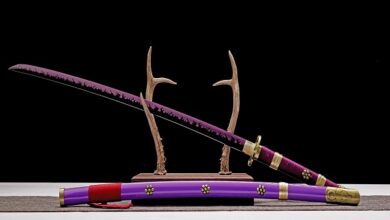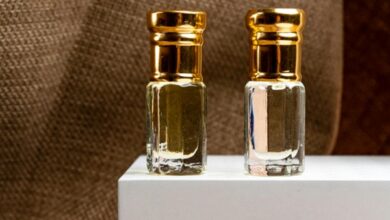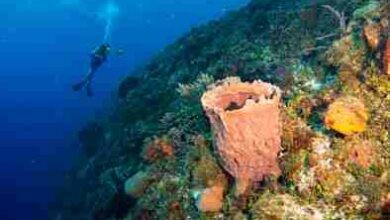The Influence of Desert Scents on Arabic Perfume Craftsmanship

The desert is a place of extremes—intense heat during the day, frigid cold at night, and an expanse of seemingly endless sand stretching out in all directions. Yet, within this harsh environment lies an ancient source of inspiration that has shaped one of the most intricate and revered perfume traditions in the world: Arabic perfumery. For centuries, the arid landscapes of the Middle East have inspired the creation of perfumes that are not just about scent, but about storytelling, cultural expression, and spiritual connection. The influence of desert scents on Arabic perfume craftsmanship is profound and offers a fascinating glimpse into how the environment shapes creativity.
Scents of the Desert: A Source of Inspiration
The desert is far from being scentless. While it might appear barren, it is home to a wide range of aromatic plants, resins, and natural materials that have formed the basis of Arabic perfume craftsmanship. These raw ingredients have been used for centuries to create fragrances that are rich, deep, and often symbolic.
One of the most iconic scents to emerge from the desert is oud, a resin derived from the agarwood tree. Oud has been used in the Middle East for millennia, and it carries a powerful, smoky, and earthy aroma that evokes the warmth of the desert sun and the mystery of ancient caravans crossing the sands. Oud is often described as “liquid gold” in the perfume world, not only because of its rare and expensive nature but also because of its deep cultural significance.
Another important desert ingredient is frankincense, which has been harvested from the arid regions of Oman, Yemen, and Somalia for thousands of years. Frankincense is known for its sweet, resinous aroma and has long been used in religious ceremonies and rituals throughout the Middle East. It is a key component in many Arabic perfumes, adding a spiritual and meditative quality to the fragrance.
Myrrh, another resin, also plays a critical role in Arabic perfumery. Like frankincense, it has a long history of use in the region, often symbolizing healing and renewal. Its scent is warm, spicy, and slightly medicinal, complementing the richness of oud and the sweetness of frankincense.
These core desert ingredients—oud, frankincense, and myrrh—are not just random choices. They reflect the resilience of life in the desert and the ability of its inhabitants to find beauty and value in even the most challenging environments.
Crafting Perfume in a Land of Extremes
The desert has not only inspired the ingredients used in Arabic perfumes but has also influenced the way these fragrances are crafted. Traditional Arabic perfumers, known as “attars,” have long understood the need to balance the intense scents of desert ingredients with softer, more delicate notes. This balance mirrors the contrasts found in the desert itself, where scorching days give way to cool, calm nights.
Arabic perfumes are typically created through a method known as maceration, where raw materials like oud and resins are soaked in oils or alcohol to extract their fragrant compounds. This slow, patient process can take weeks or even months, allowing the scents to fully develop and merge into complex, multi-layered fragrances. This is one of the reasons why Arabic perfumes are often more intense and longer-lasting than Western counterparts—they are crafted to linger on the skin, much like the enduring presence of the desert.
In Arabic culture, perfumes are more than just a luxury item; they are a part of daily life and play a role in personal identity, social interaction, and spirituality. The tradition of gifting perfumes is deeply rooted in Arab culture, and it’s common to see families passing down cherished fragrances from generation to generation. The act of giving a perfume gift box, especially one that contains rare and precious desert-inspired ingredients, is seen as a meaningful gesture that signifies respect, honor, and affection.
The Cultural Significance of Desert Scents
The desert is not just a physical space but also a cultural symbol in the Arab world. Its vastness represents both isolation and connection, hardship and beauty. These dualities are reflected in the perfumes created in the region. Just as the desert can seem harsh and unforgiving on the surface but holds hidden treasures beneath, Arabic perfumes often open with strong, bold notes that later reveal softer, more nuanced layers.
Oud, in particular, holds a special place in Arab society. It is not uncommon to walk into a home in the Middle East and be greeted by the scent of burning oud, a practice known as “bukhoor,” which is believed to cleanse the space and bring blessings. In fact, oud is so deeply intertwined with Middle Eastern identity that some people even associate it with memories of home and family gatherings.
As a result, oud-based perfumes are often worn on special occasions, from weddings to religious ceremonies, adding a sense of gravitas and tradition to these events. The perfume gift box, particularly one containing oud, is a cherished and thoughtful gift, often reserved for significant milestones or life celebrations.
The Modern Evolution of Arabic Perfumes
While traditional Arabic perfumes continue to be revered, modern perfumers have begun to experiment with desert ingredients, blending them with more contemporary elements to create unique, hybrid fragrances. One of the most innovative names in this space is PARFUM.AE, a brand that seamlessly merges the rich history of Arabic perfumery with modern-day craftsmanship.
They have embraced the deep, earthy notes of oud, frankincense, and myrrh while incorporating fresher, more floral ingredients that appeal to a global audience. This blending of the old and new allows Arabic perfumes to retain their cultural significance while also gaining popularity on the international stage.
In recent years, the global demand for oud-based perfumes has skyrocketed, with the global oud oil market expected to reach over $64 billion by 2025. This surge in demand has led to increased cultivation and sustainability efforts to protect the agarwood trees from which oud is harvested. Brands are not only preserving this ancient art form but are also ensuring that it can be enjoyed by future generations.
How Desert Scents Transcend Time
The timelessness of desert scents lies in their ability to evoke both the past and the present. For many, the smell of oud or frankincense can transport them back to a time when the Middle East was a hub of trade, culture, and knowledge. Caravans laden with spices, resins, and perfumes would travel across the desert, connecting different cultures and fostering the exchange of ideas.
At the same time, desert-inspired perfumes continue to feel relevant today, offering a sensory escape from the fast pace of modern life. The slow, meditative process of creating these perfumes mirrors the unhurried, reflective nature of life in the desert. It reminds us to pause, breathe, and appreciate the beauty that can be found in simplicity.
The Future of Desert-Inspired Perfumes
As the world becomes increasingly connected, the influence of desert scents on Arabic perfume craftsmanship shows no signs of fading. In fact, it is likely to grow stronger as more people around the globe discover and fall in love with the richness and complexity of these fragrances. Whether through traditional methods or modern innovations, the spirit of the desert will continue to shape and inspire the perfumes of tomorrow.
While the ingredients may be rooted in the sands of the Middle East, their appeal is universal. The rich, smoky aroma of oud or the sweet, resinous scent of frankincense can transcend cultural boundaries, evoking feelings of nostalgia, luxury, and peace no matter where in the world you are.
A Lasting Legacy of Scent
The influence of desert scents on Arabic perfume craftsmanship goes beyond mere fragrance. It is a reflection of the environment, culture, and history of the Middle East—a tradition that has been passed down through generations and continues to evolve today. Whether gifted in a perfume gift box or enjoyed as a personal indulgence, these perfumes carry with them the essence of the desert: resilience, beauty, and timelessness.
As more people discover the allure of desert-inspired perfumes, it becomes clear that these fragrances are not just a tribute to the past but a testament to the enduring power of nature to inspire creativity and connection.



